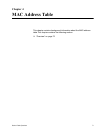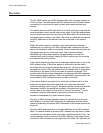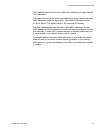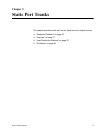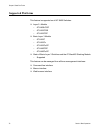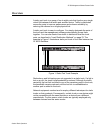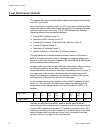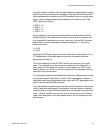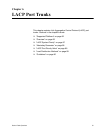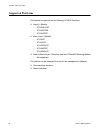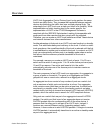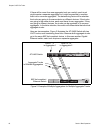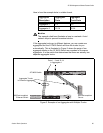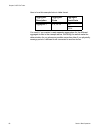AT-S63 Management Software Features Guide
Section I: Basic Operations 79
A similar method is used for the two load distribution methods that employ
both the source and destination addresses. Only here the last three bits of
both addresses are combined by an XOR process to derive a single value
which is then compared against the mappings of the bits to ports. The
XOR rules are as follows:
0 XOR 0 = 0
0 XOR 1 = 1
1 XOR 0 = 1
1 XOR 1 = 0
As an example, assume you had selected source and destination MAC
addresses for the load distribution method in our previous example, and
that a packet for transmission over the trunk had a source MAC address
that ended in 9 and a destination address that ended in 3. The binary
values would be:
9 = 1001
3 = 0011
Applying the XOR rules above on the last three bits would result in 010, or
2. A examination of the table above shows that the packet would be
transmitted from port 9.
Port trunk mappings on the AT-9400 Switch can consist of up to eight
ports. This corresponds to the maximum number of ports allowed in a
static trunk and the maximum number of active ports in an LACP trunk.
Inactive ports in an LACP trunk are not applied to the mappings until they
transition to the active status.
You can assign different load distribution methods to different static trunks
on the same switch. The same is true for LACP aggregators. However, it
should be noted that all aggregate trunks within an LACP aggregator must
use the same load distribution method.
The load distribution methods assume that the final three bits of the source
and/or destination addresses of the packets from the network nodes are
varied enough to support efficient distribution of the packets over the trunk
ports. A lack of variation can result in one or more ports in a trunk being
used more than others, with the potential loss of a trunk’s efficiency and
performance.



